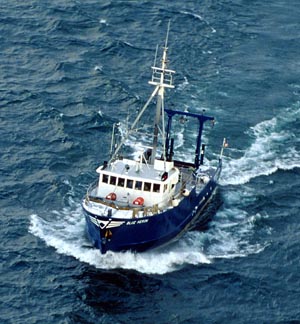Project: Trace Metal Limitation of Phytoplankton Productivity: Combined Immunological, Geochemical and Growth Assay Approaches in Lake Superior
Description
ABSTRACT FROM NSF AWARDS: OCE-9819324 / OCE-9902660 / OCE- 9902658
Although a number of recent studies have verified that primary production in various marine environments may be limited by trace metal availability, there has not yet been a similar body of research for freshwater systems, even the inland sea system of the North American Great Lakes. In this project researchers from the University of Minnesota, Rutgers University, and Bowling Green State University will investigate the existence, mechanisms, spatial-temporal extent, and significance of trace metal limitation to primary production in Lake Superior. They will take a three-pronged approach. First, to quantify and characterize total and bioactive trace metal concentrations, Al, Fe, Mn, Zn, Cu, Cd, and Co would be determined in solution, in suspended particles, and in plankton in the field. Secondly, immunological and fluorescence assays would be used to assess metal deficiency in algae in the field. Third, trace metal enrichment experiments would be used to assess limitation experimentally in the laboratory. The three field sites would be chosen to take advantage of existing data available from the NSF-sponsored KITES program.
| Dataset | Latest Version Date | Current State |
|---|---|---|
| CTD profiles from the Lake Superior collected during various R/V Blue Heron cruises between 2000-2002 (IRONMAN project) | 2016-08-22 | Final no updates expected |
| Standard station locations for repeat sampling in the Laurentian Great Lakes (LGL) - Superior, Huron, Erie from 2004 tp 2013 (SINC project, IRONMAN project, NILSS project, CARGO project) | 2012-08-03 | Final with updates expected |

People
Principal Investigator: Dr Erik T. Brown
University of Minnesota Duluth
Co-Principal Investigator: Robert Michael McKay
Bowling Green State University (BGSU)
Co-Principal Investigator: Robert M. Sherrell
Rutgers University
Contact: Dr Robert W. Sterner
University of Minnesota Twin Cities (UMTC)
Technician: Ms Sandra Brovold
University of Minnesota Twin Cities (UMTC)
BCO-DMO Data Manager: Stephen R. Gegg
Woods Hole Oceanographic Institution (WHOI BCO-DMO)
Programs
Laurentian Great Lakes Ecosystem Studies [Laurentian Great Lakes Ecosystem Studies]
